Interview with the Johto Times Website Team
An interview with the Johto Times website team, discussing the creation and design of the website. Plus, a recap of the latest Pokémon news
Feature: Interview with the Johto Times Website Team
The launch of Johto Times’s website is a significant milestone for the project. It is also a great opportunity to highlight the people who made it possible. Rather than our usual question and answer format, this interview’s structure will be a little different as I am joined by Renan who built the website and Irene who created the header. Between us, we will share our thoughts and feelings about how the website came together.
Darren:
Thanks for taking the time out of your schedule to talk to me about the new website, Renan and Irene! I suppose we should begin by letting our readers get to know you a bit better and explaining your roles here at Johto Times!
Renan:
Hi! I’m Renan and I’m a Brazilian software engineer based in Italy. I’ve known you for a long time and have followed some of your other crazy projects, but Johto Times is the one in which I got the most involved. I started helping out with proofreading the issues, but since 2024 I’ve been working on the development of the website itself!
Irene:
I’m Irene, an artist that loves Nintendo and its worlds! I enjoy the Pokémon games and absolutely adore its creatures! It was our shared interests that led to my contributions for this site.
My role is to assist with making art assets for the site. Most of the time, I will create rough concepts to see what would fit, and once we know what we will make, we’ll go all in on getting the art perfected for the site. Each work provides an interesting challenge, and I always learn something useful for the next project!
 The Johto Times website on day one, August 1st, 2025
The Johto Times website on day one, August 1st, 2025
Darren:
Renan, we first discussed the idea of a Johto Times website back in March 2023, shortly after Johto Times launched. What were your initial feelings about that suggestion?
Renan:
I’ll admit that I had to let it sit for some time. The newsletter had just started and it wasn’t really clear (to me, at least) how far it would go. Over the following months I came to really appreciate the work and dedication being put into the project, and now I really believe in it.
Darren:
It’s important to note that even I wasn’t sure how far Johto Times would go. It was just going to be a place to share my memories of the past, and I would add three issues that maybe six people would read, before it started to gather dust. But my enthusiasm didn’t lessen, and I knew it had potential and some importance. I knew that in the future we had to give this project a home, and I am thankful that you were there to help!
Renan:
I knew that since the beginning you didn’t want to be shackled by a commercial platform like Substack. I think you made great use of it so far but ultimately it’s important that we have more control and ownership over our own content.
Darren:
Around January 2024, we finally decided to go ahead with the website. One of the most important things about your agreement to work on the website was that it had to be done be done in your spare time, and the experience was to be as stress-free as possible. How do you think we did with that goal?
Renan:
At that time, I was pretty frustrated with my job, which was not giving me enough “mental satisfaction” as a software developer. Still, having a full-time job is (obviously) time-consuming, and I couldn’t promise that Johto Times would be my main priority. I also live alone in a foreign country, so sometimes I have to commit time to other things, and I do like to travel somewhat often.
I kicked off the project around March 2024, and I believe we had the basic functionalities working around October, which is when I got a new job, which required a new level of time and energy commitment, so after that things slowed down a bit.
As you say, it had to be something that would bring me satisfaction, avoid becoming another source of stress in my life. Yet sometimes I would have to spend weeks away from the project and it would drive a sense of guilt. I thought I was letting my friend down, and this is what actually caused me some stress at times. But a while back the two of us communicated better about all this and since then I have been feeling much better about the project. It also helped that it was finally reaching the point that we wanted.
Darren:
It’s unfortunate you felt that way; you never let me down in anything we have done together, and your friendship means more than any website. Once again, it was important that it was done in your spare time. I admit, I didn’t expect it would take as long as it did, but I will always value our friendship over a website.
Renan:
Deep down I knew that to be the case! But I also knew how important this project is to you, and it must have been hard to wait for so long. It was also hard for me, and I’ve been feeling very relieved now that it’s finally out there, even if there are still a bunch of improvements we would like to make.
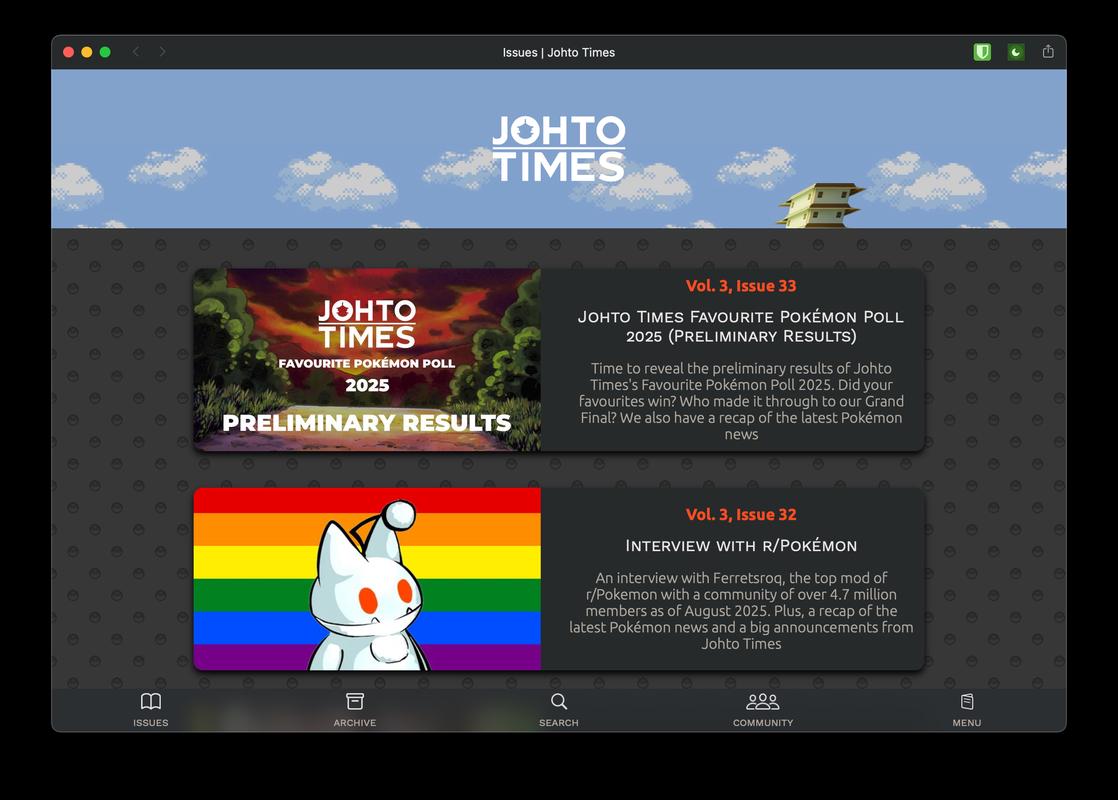 The front page of Johto Times, as of August 18th, 2025
The front page of Johto Times, as of August 18th, 2025
Darren:
It really surprised me that you were keen on the idea of creating the website from scratch, even coding an editor from scratch! Can you share why you made that decision?
Renan:
Yeah, that was a very difficult decision! In the very early days our plan was to go with what we both knew: WordPress. I have previous experience implementing a custom WordPress theme (for my Brazilian website, Neo Fusion), and you have experience managing them. But I think we were both looking to try something different. You would often ask about custom functionalities that would not necessarily fit with the WordPress structure. And I, in my endless pursuit of new things to learn, wanted to try building something from the ground up. All in all, WordPress is a great open-source tool, but we wanted to try another approach.
When it comes to software, saying “from scratch” needs to be defined somewhere. In our case that meant no Content Management System (CMS), just something completely bespoke.
That said, the editor itself is built upon an open-source JavaScript library, which I plugged into our interface. One thing that is unique about Johto Times is the division of content into issues, which contain different sections such as the news items and the mailbag, so that was all worked on based on the open-source components. But our readers won’t need to worry about it; the editor is just for you.
Darren:
I was blown away by what you had made! As someone who isn’t very tech savvy, it was easy to understand, and I could get my head around things pretty quickly.
Renan:
I hope that, if anyone else ever has to do maintenance on it, they will share your words. But I doubt it: working on someone else’s code is always a challenge. Now that it has been released I want to take some time to do some housekeeping, like cleaning up the code and improving documentation. The code will be made open-source once I’m happy with it.
What should have been obvious, but ended up surprising me a bit, is how much more stuff we have to think about for a website in 2025 compared to in the past. A lot of the sites we interviewed here started in the ‘90s and ‘00s and were able to gradually build up their features as new web standards rolled along. We had to rethink everything from scratch: the user interaction, the editor/admin functionality, the comments, the rendering of content, the authentication, the reactiveness of the UI, etc. It all had to be done in a modern way, considering accessibility, privacy, and security – for both us and our users.
 Johto Times issues have a unique and standard structure: intro, news, main feature, and mailbag. We wanted to preserve the issue-based cadence while also making the individual pieces of content standalone, like in the scrolling feed of mailbag messages from readers
Johto Times issues have a unique and standard structure: intro, news, main feature, and mailbag. We wanted to preserve the issue-based cadence while also making the individual pieces of content standalone, like in the scrolling feed of mailbag messages from readers
Darren:
The website is quite snappy, it loads quickly, and you can find content with ease when using the search feature. Can you share more about your approach to the functionality of the website?
Renan:
Part of the reason to not go with WordPress was to follow the philosophy of software not doing more than it needs to do. You may want to call WordPress “bloated”, but in reality it is quite impressive for what it is: a massive multi-purpose CMS written in PHP. It simply does a lot of things, and it is written in an interpreted programming language, which always causes some performance bottlenecks.
When exploring our options, I saw that Go is currently a very popular and successful choice for web back-ends. Go is a relatively modern programming language, dating back to 2012, and it is compiled and statically typed, two properties that I greatly appreciate for performance and correctness.
This was my first full project with Go, so I had to learn a lot about it along the way. That involved reading the official docs, diving deep into Stack Overflow and reading plenty of blogs and tutorials.
Go has a philosophy of keeping things explicit and simple, which sometimes makes the code tedious to read. There is a lot of error checking and not much syntactic sugar. But the good news is that if you can follow the breadcrumbs of the bug you’re trying to fix, the actual behavior of what’s going on should be easy to understand. And, as mentioned above, once compiled it is quite performant.
As for the front-end, I went with the Templ templating engine, which is native to Go, and the HTMX library for the interactive components of the UI (for example, the type-as-you-go search). Front-end design is not my strong point, but what you see, aside from the logo and header image designed by Irene, is all my work. It’s not getting any awards, but I hope it is sensible and usable for most people. And it’s all a more old-school approach to web development compared to the endless JavaScript frameworks you’ll see eating up your RAM.
Other than that, I used some popular Go libraries to work with the HTTP routing, managing the database, and converting content to and from Markdown. I’m glad the end result feels snappy! Hopefully it’ll get even better with time as I get the chance to polish it up.
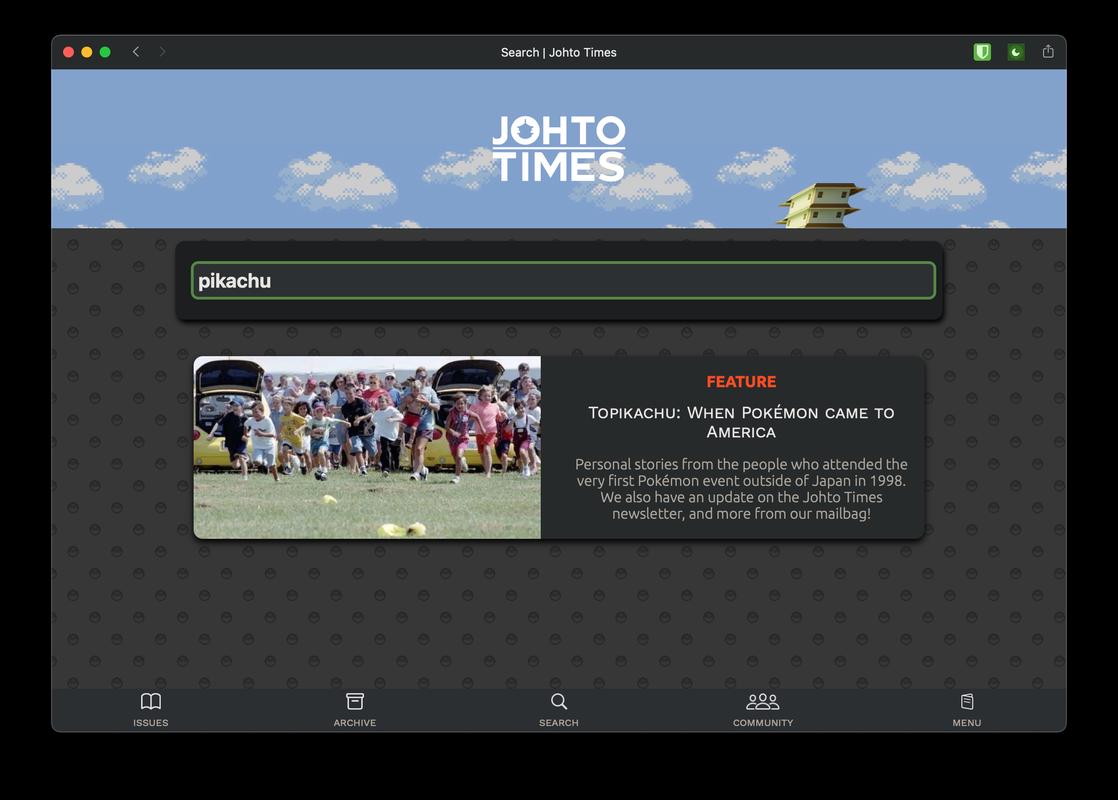 Johto Times search function should help readers find published content more easily
Johto Times search function should help readers find published content more easily
Darren:
You created a tool to transfer our already published issues of Johto Times over to our website, which really helped to speed up the process. It made my job of transferring content onto the website significantly easier, and I feel you did a great job with this; thank you! Do you think you can share more about that?
Renan:
The fact that Johto Times already had over two years of content to migrate out of Substack required some sort of automated approach to keep us sane. It ended up becoming its own little side-project, with its own quirks and bugs we had to find and fix. In the end it didn’t handle all unique scenarios, but it avoided most of the work.
In essence, it’s a web scraper that would crawl through the existing issues on Substack and convert them to Markdown files, which are then ingested by the new website code. I chose to store them in Markdown because it’s a human-friendly format, so even without the website, the content itself can be made readable!
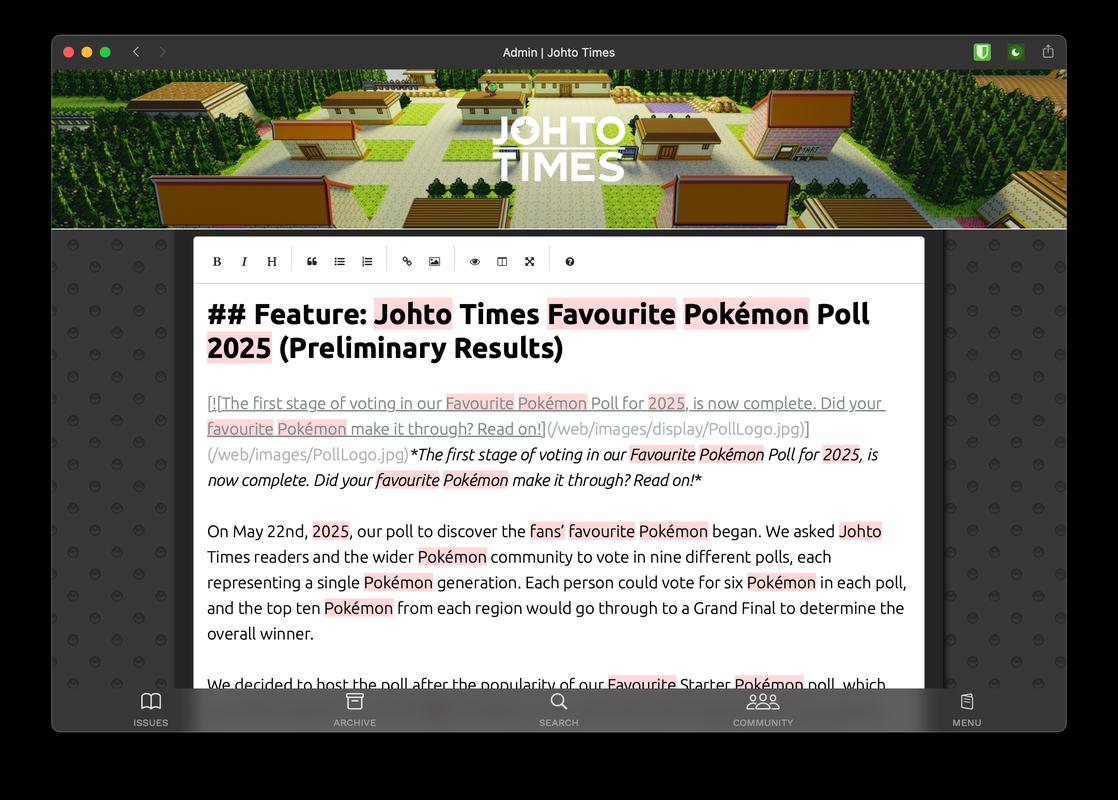 Johto Times Markdown editor in action
Johto Times Markdown editor in action
Darren:
Despite the tool being very helpful, we still had to go through each issue and make corrections. It was a great opportunity to fix minor mistakes we had made across all previous newsletters while retaining the quality and historical context. We even found some images that were meant to be published as part of older issues but never were. We had a team of a dozen people come together to help tackle them over a week, and then a further three days to apply all the changes. It was a huge task, but an important one.
Renan:
Yeah, as I mentioned before, the migration of content was a project on its own. Once the tool was written, actually getting the content was quick and easy, but checking if everything looked right took a lot of manual reviewing. So it’s great that you were able to assemble that team to help out.
Some problems people noticed were common across multiple issues, so then I would adjust the tool, run the migration again, and we were done. Some others were related to how we were rendering the HTML based on the Markdown, which might’ve been tricky to find, but was a one-time fix. The hardest parts were the ones that couldn’t be reliably automated, like some image captions, and making sure all the links pointed to the new website rather than Substack.
Darren:
I am so thankful to the group that helped us with that! They worked quickly and identified many problems we were then able to address. Despite this, many of the issues highlighted were small, and I was able to correct most of them without your assistance. I appreciate them, and you, for working to address them promptly.
Darren:
One of the core objectives of Johto Times is to document and preserve the early history of the franchise. Perhaps you wouldn't mind sharing how we are keeping this in mind with this website?
Renan:
This was something we were always thinking about and it was one of the main reasons why I wanted to have the website storing content in Markdown instead of in a monolithic database (which is what WordPress, for example, does). There is a small database used for searching and metadata, but the issues themselves are stored in a bunch of Markdown files that are read as needed. Not the most performant approach, but we are not serving millions of users, so I think the compromise is worth it.
In the near future, the archive of Markdown files will also be made open-source and available, under an appropriate creative licence, ideally in two or three locations – well, at least the text, since images can be a bit tricky both storage-wise and in terms of copyright. What we want is that the information that we gathered is available to whoever wants to read it, even if we’re no longer around to maintain the website.
Darren:
From day one, I planned for the day Johto Times may not be around anymore. How can we make big gestures about archival unless we take our own seriously? Even outside of the website, I have copies of everything we have done on my computer, harddrive, and on the cloud.
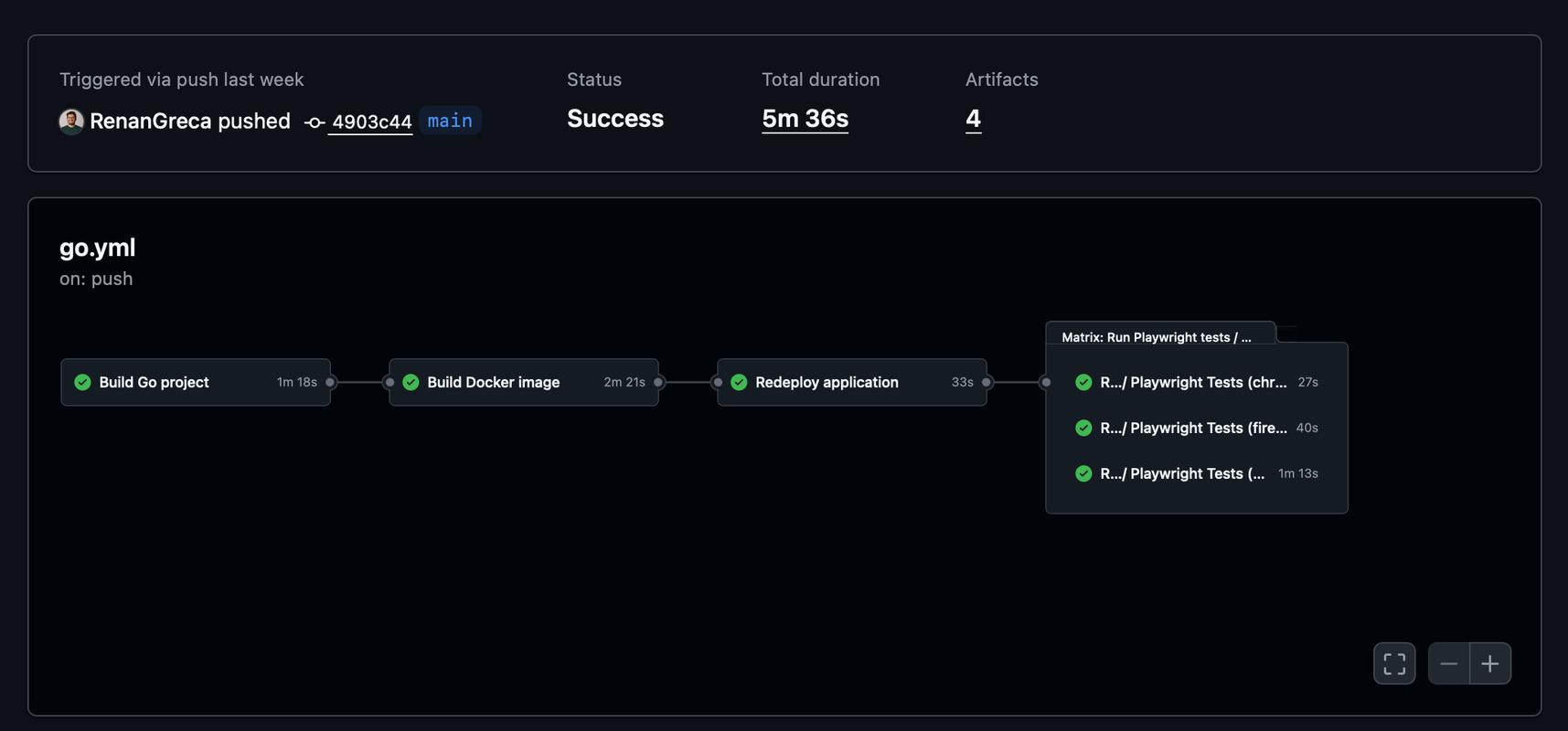 During development, Renan wrote a GitHub automation that would rebuild and update a testing version of the website in his own servers (in Italy) so Darren could try out the changes (in the UK). Wonders of technology!
During development, Renan wrote a GitHub automation that would rebuild and update a testing version of the website in his own servers (in Italy) so Darren could try out the changes (in the UK). Wonders of technology!
Darren:
The creation of the website’s header was particularly interesting. When we launched Johto Times, we used official artwork, and then a pixel art of Ecruteak City I made back in May 2023. But Irene, you came up with such a cool idea that I simply couldn’t resist having you contribute it to the website! Can you explain how you came up with the design?
Irene:
The website header was directly inspired by my previous work for the Ruins of Alph Research header. In that one, I wanted to recreate the area in 3D so that I could have a dynamic shot of it, being able to clearly show the landmarks without things feeling crammed in. The idea of doing the same to Ecruteak came about pretty quickly, and I went to work on it almost right away!
One giant hurdle we were met with was how to implement a background. My first thought was to make my own “route” behind Ecruteak City, based on what we see behind it in other media like Pokémon HeartGold and SoulSilver, the anime, concept art, et cetera.
Another idea came to the rescue, which would make this process much easier! It was directly inspired by the Animal Crossing series, which renders the towns and islands on top of a cylinder, so to speak. Doing so made it feasible to simplify the background to a single image, with the added bonus of making the header much more dynamic. Putting the Bell Tower on top of the cylinder made it appear even taller, and it looks much more prominent now!
Darren:
Of course! You worked really hard on that header for our Ruins of Alph Research side project! I was very impressed with it at the time. At first I wasn't sure about the cylinder approach, but once I saw it in action I completely changed my mind.
I still think we need to include Natu in there somewhere! He is the Johto Times mascot after all (laughs).
Irene:
If you insist… adds Xatu instead.
Editor’s note: Natu was later added to the headers. Have you spotted him yet?
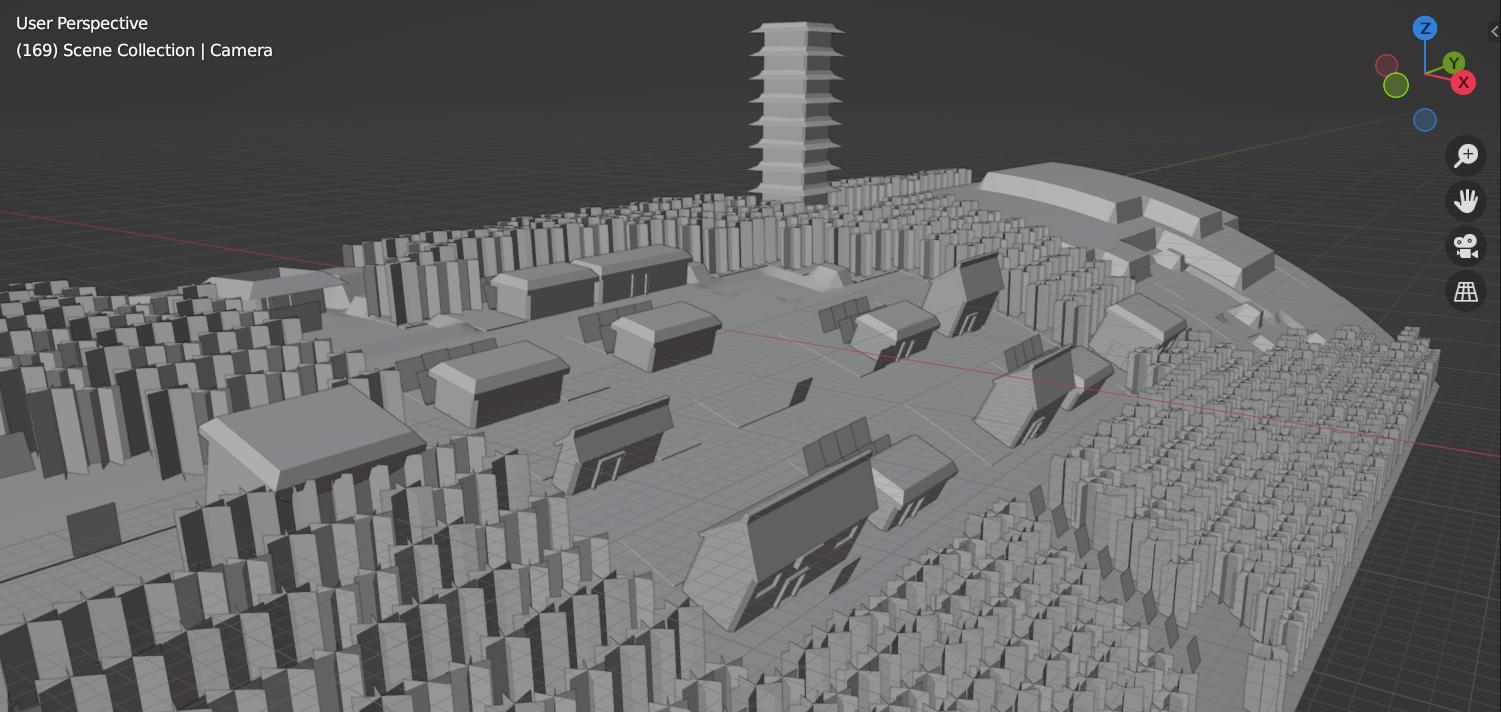 An untextured cylindrical model of Ecruteak City used for the banner
An untextured cylindrical model of Ecruteak City used for the banner
Darren:
I can’t remember who came up with the idea of having a different banner depending on the time of day, but I think it’s such a cool idea. Completely unnecessary, but cool! How did you come up with the different designs?
Irene:
I think we were both on the same wavelength on having different versions of the banner, and to me it felt important to consider it as the day/night cycle was first implemented in Johto. It was a big deal back then, and it absolutely fits the spirit of that generation of Pokémon. I’m really happy we got to implement this!
As for how to implement it, it wasn’t too hard for me to do. The 3D geometry shares a lot of the same textures, so instead of giving an individual texture for every tile, I instead created an image atlas containing most of the textures used. Doing so allowed me to swap the texture with a single click of a button, and most of the work would be done.
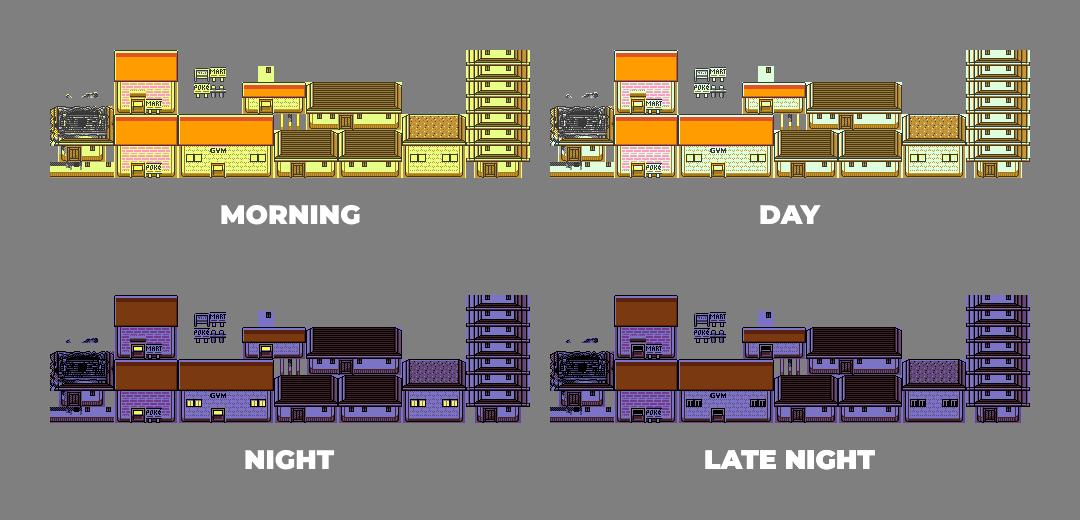 Ecruteak buildings from Pokémon Crystal, compiled together in a single image. There are four versions in total, being: Morning, Day, Night, Late Night
Ecruteak buildings from Pokémon Crystal, compiled together in a single image. There are four versions in total, being: Morning, Day, Night, Late Night
Irene:
To make things simple to me, I had a PNG of the entire stretch from Route 38 to Route 42. This was made by stitching together my own screenshots of Pokémon Crystal. By doing that, I could use that texture on a simple plane and all of the tiles would line up perfectly! It did mean having to remove my player character, NPCs, and trees and fences by hand, but in the end it let me have a useful texture to use for this project.
Darren:
I just think it's really cool! It's completely unnecessary to go this far with a banner, but I approve of it! At the time of writing, multiple banners based on time of day haven't even been implemented, so I'm crossing my fingers it works!
Editor’s note: They did!
Renan:
This was an instance of Darren pushing for some feature creep (laughs). You brought the idea a while back, and I always thought it was a fun concept but ultimately low priority. But then you got Lady Vulpix to share some of the code she used to accomplish something similar and it was just a matter of plugging it into my code with some small adjustments. It was then my idea to have the banner image scroll with the content, which I think makes the effect even cooler. Sometimes features feel so small in the scope of a project but add so much satisfaction to it!
Darren:
Excuse me, but Irene wanted to add MOON PHASES, with a different nighttime banner every 28 days!
Irene:
IT WOULD BE COOL, THOUGH.
Darren:
We are putting this interview together shortly before the website goes live. We are still a couple of days before we wrap everything up, but how do you feel about what we’ve created?
Renan:
I’m really glad to have seen it through, and I’ve been sleeping much better over the last few days (laughs). It’s a project that is simple in its premise but ambitious in its approach. I’ve learned a lot by doing it, and I’m looking forward to continuing working on it to make it better and better. But gradually! We still have to migrate the mailing list itself out of Substack, and I believe that will be a significant challenge.
Irene:
As an artist, what’s important to me is to see things through and be able to share my ideas and concepts with the world. It always takes a lot of iteration, but the end result is something beautiful, and something I can take pride in. I am very happy with what we have managed to make as a team!
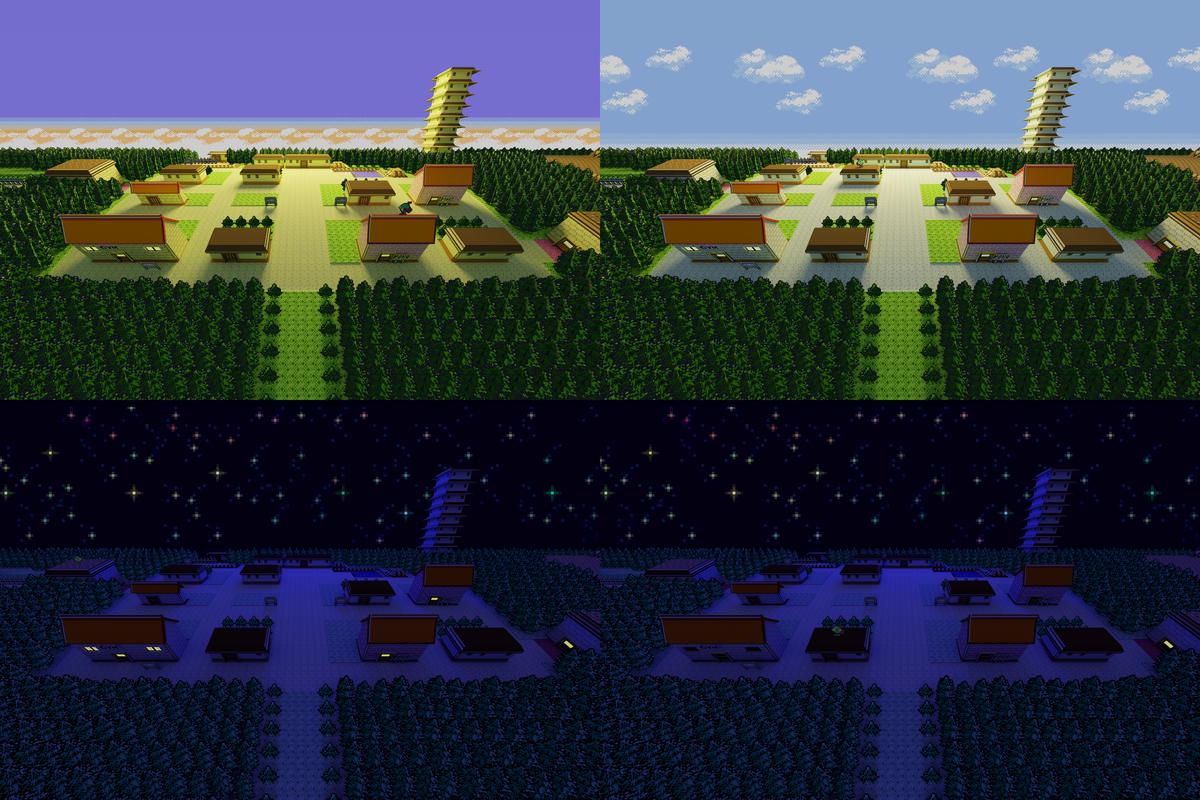 Each of the banners, displaying a different scene (Morning, Day, Night, Late Night) which display depending on the visitor’s local time. We used the same day and night cycle as Pokémon Crystal
Each of the banners, displaying a different scene (Morning, Day, Night, Late Night) which display depending on the visitor’s local time. We used the same day and night cycle as Pokémon Crystal
Darren:
Thank you both for sharing your thoughts and feelings on the new website. I hope that everyone will enjoy browsing the site. Do you have any comments you would like to make before we wrap this up?
Renan:
Thanks for not firing me! (laughs)
All jokes aside, this has been a journey and I’m sure it’ll continue to be one.
I’m not very active on social media these days, but if you want to follow me, you can do so on GitHub and Instagram. And if you speak Portuguese, you can check out some of my writing at Neo Fusion!
Irene:
Being able to create art is important to me personally, and I am really happy to see my growth! It has been a fun endeavour so far, and I’m happy to see the success for Johto Times generally!
What I enjoy the most about Pokémon is its amazing creatures, and I love that each and every Pokémon is someone’s favourite!
A huge thanks to Renan and Irene for joining me in this discussion about the website. We hope that our users will enjoy exploring the website and visiting it for years to come!
Interview conducted on: July 30th, 2025
Interview published on: August 21st, 2025

Comments
Loading comments...